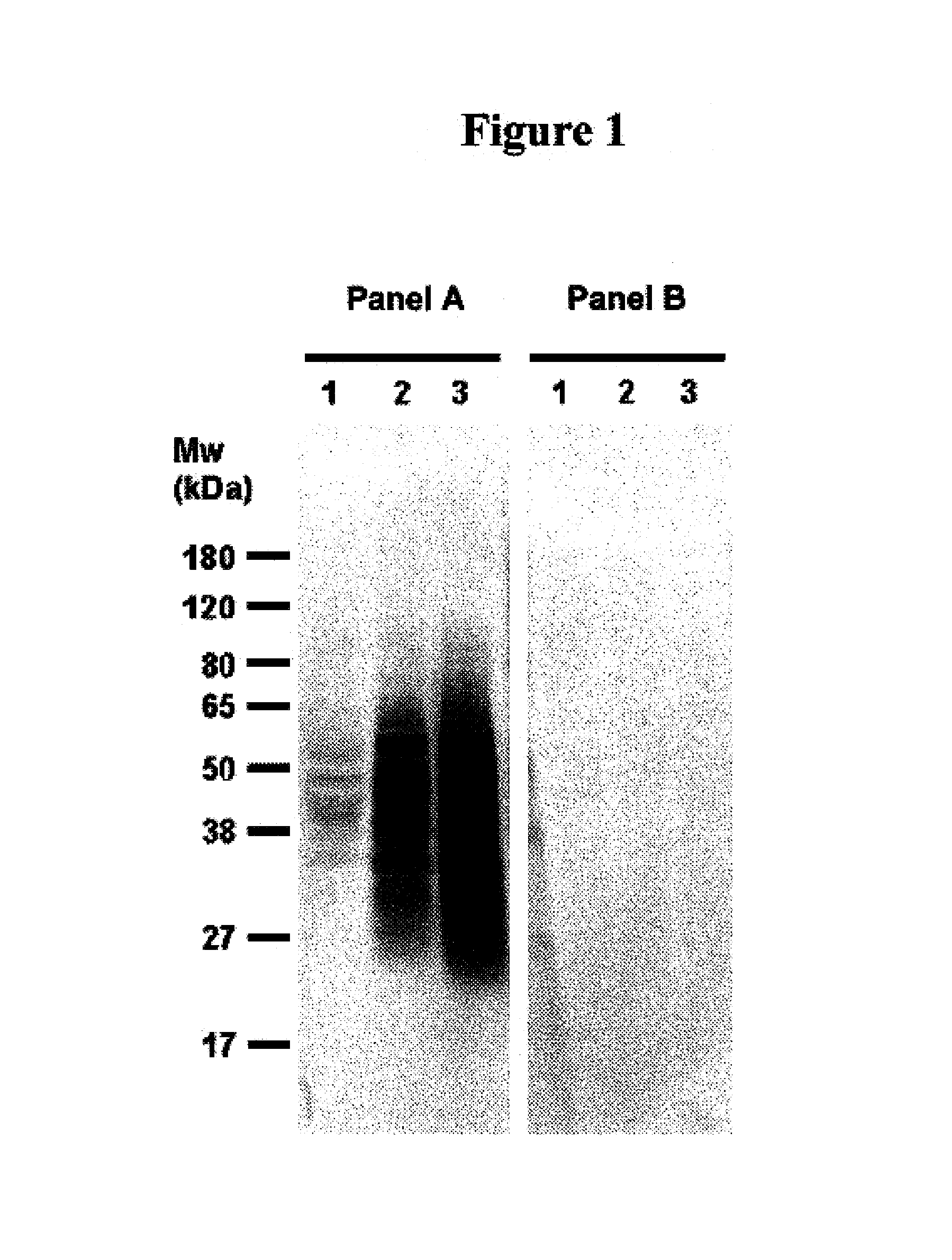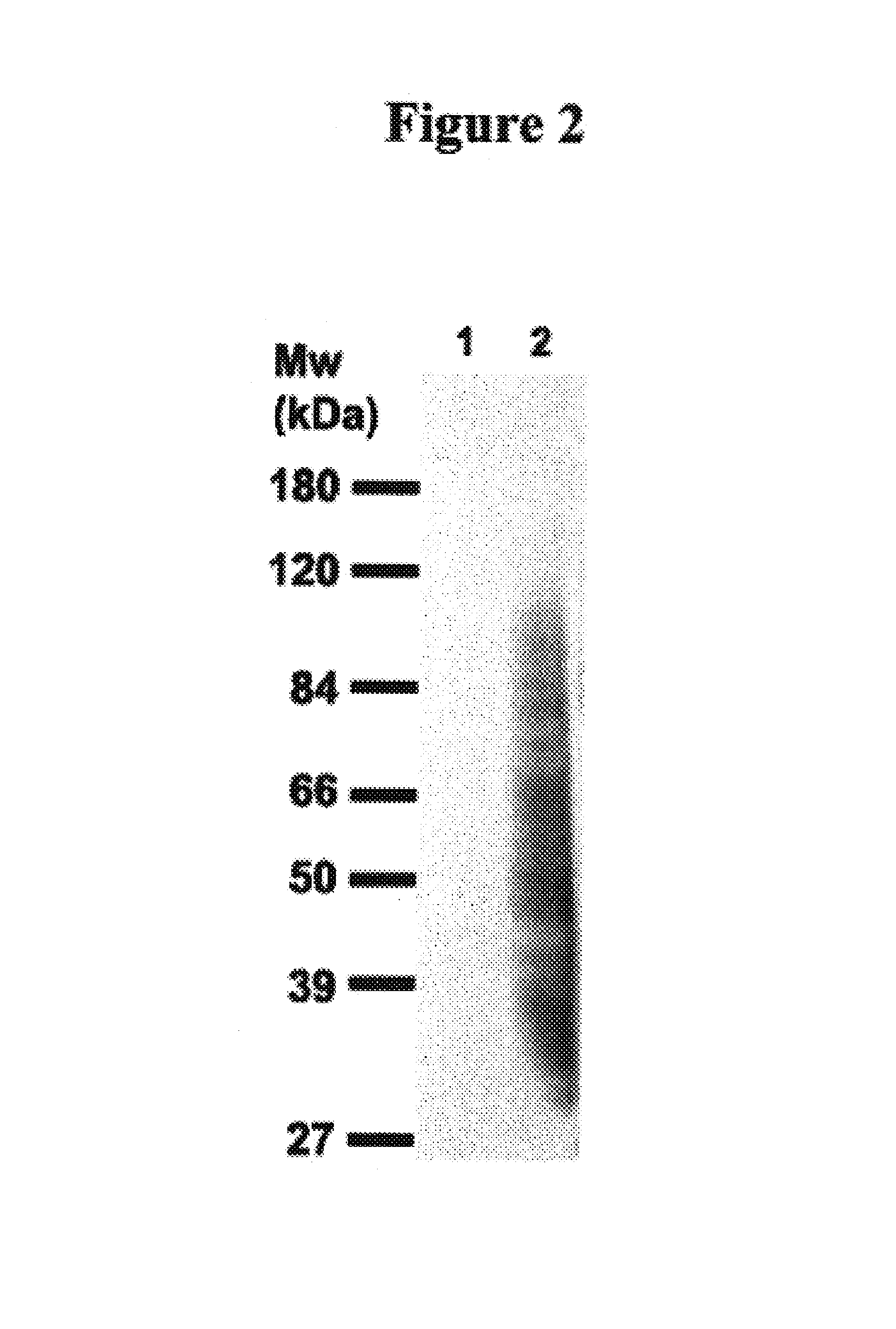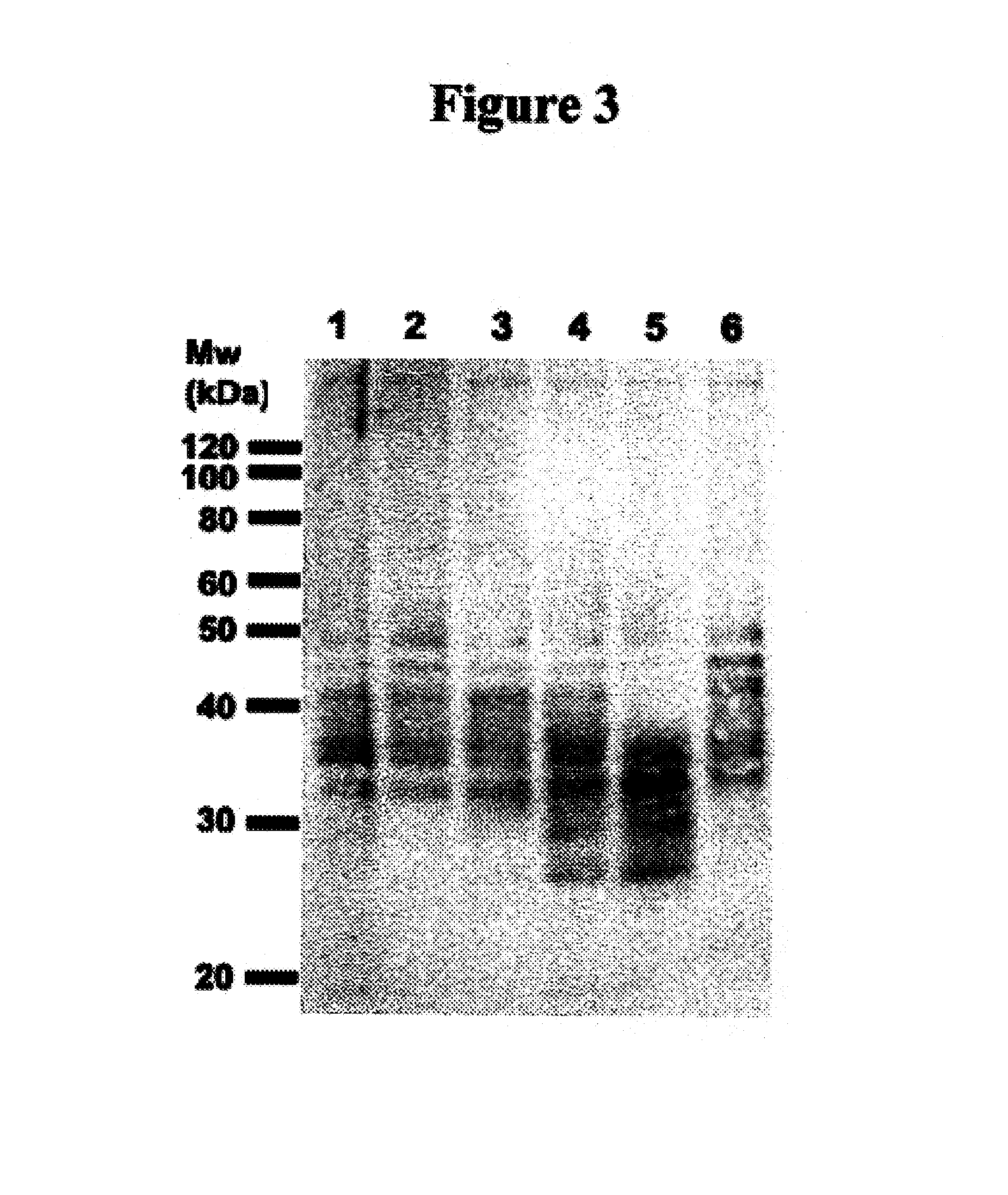Cytotoxicity mediation of cells evidencing surface expression of CD63
a cytotoxicity and surface expression technology, applied in the field of cancer diagnosis and treatment, can solve the problems of difficult to investigate the role of this family of proteins in the modulation of signal transduction pathways, lack of strong and consistent data that would definitively demonstrate, and difficulty in elucidating the mechanisms that lead to tumor progression
- Summary
- Abstract
- Description
- Claims
- Application Information
AI Technical Summary
Benefits of technology
Problems solved by technology
Method used
Image
Examples
example 1
Identification of 7BD-33-11A Binding proteins by Western Immunoblotting
[0133]As outlined and discussed in Ser. No. 10 / 810,751, the contents of are herein incorporated by reference, to identify the antigen(s) recognized by the antibody 7BD-33-11A, cell membrane preparations were subjected to sodium dodecylsulphate polyacrylamide gel electrophoresis (SDS-PAGE), and transferred to membranes. The latter were probed with the antibody 7BD-33-11A to visualize the proteins detected by this antibody.
1.0. Whole Cell Lysate and Total Membrane Fraction Preparation
1.1. Whole Cell Lysate Preparation
[0134]Previous work by FACS demonstrated binding of antibody 7BD-33-11A to the breast cancer cell line MDA-MB-231 (MB-231). As a result total cell membrane preparations and whole cell lysates obtained from this cell line were used for the antigen identification and characterization. Total cell lysate from MB-231 cells was prepared as follows: MB-231 cell pellet (1.5 g) was resuspended in 2 mL lysis buf...
example 2
Identification of Antigens Bound by 7BD-33-11A
[0138]The data detailed in this example have been described previously in Ser. No. 10 / 810,751, the contents of which are herein incorporated by reference.
1.0 Immunoprecipitation of Antigens from MB-231 Total Membrane Fraction
[0139]Total membrane extracts (5 mg total protein) were diluted to a 1 mg / mL final protein concentration with the appropriate volume of 1× lysis buffer (50 mM Tris pH 7.4, 150 mM NaCl, 1% Triton X-100, 0.02% NaN3, 2 mM sodium orthovanadate, 50 mM sodium fluoride, and protease inhibitor cocktail (Roche Diagnostics, Manheim, Germany)), and with the appropriate volume of 2×RIPA buffer (50 mM Tris pH 7.4, 150 mM NaCl, 1.0% sodium cholate, 0.2% SDS, 1% Triton X-100 and 0.02% NaN3), in order to obtain a final 1×RIPA buffer concentration. The extracts were pre-cleared for 2 hr with protein G-Sepharose beads (Amersham Biosciences, Uppsala, Sweden) at 4° C. Total membrane extracts were removed and stock BSA (10 mg / mL) was add...
example 3
Identification of Antigens Bound by 1A245.6 and H460-22-1
1.0 Immunoprecipitation of Antigens from MB-231 Total Membrane Fraction
[0149]Total membrane extracts (1 mg total protein) were diluted to a 1 mg / mL final protein concentration with the appropriate volume of 1× lysis buffer (50 mM Tris pH 7.4, 150 mM NaCl, 1% Triton X-100, 0.02% NaN3, 2 mM sodium orthovanadate, 50 mM NaF, and protease inhibitor cocktail), and with the appropriate volume of 2× RIPA buffer (50 mM Tris pH 7.4, 150 mM NaCl, 1.0% NaCholate, 0.2% SDS, 1% Triton X-100 and 0.02% NaN3), in order to obtain a final 1× RIPA buffer concentration. The extracts were pre-cleared for 2 hr with protein G-Sepharose beads (Amersham Biosciences; Uppsala, Sweden) at 4° C. Total membrane extracts were removed and stock BSA (10 mg / mL) was added to a 0.5 mg / mL final BSA concentration. While extracts were being pre-cleared, antibody-conjugated protein G-Sepharose beads (60 μg of antibody chemically cross-linked to 30 μl of protein G Sep...
PUM
| Property | Measurement | Unit |
|---|---|---|
| median time | aaaaa | aaaaa |
| median time | aaaaa | aaaaa |
| median time | aaaaa | aaaaa |
Abstract
Description
Claims
Application Information
 Login to View More
Login to View More - R&D
- Intellectual Property
- Life Sciences
- Materials
- Tech Scout
- Unparalleled Data Quality
- Higher Quality Content
- 60% Fewer Hallucinations
Browse by: Latest US Patents, China's latest patents, Technical Efficacy Thesaurus, Application Domain, Technology Topic, Popular Technical Reports.
© 2025 PatSnap. All rights reserved.Legal|Privacy policy|Modern Slavery Act Transparency Statement|Sitemap|About US| Contact US: help@patsnap.com



